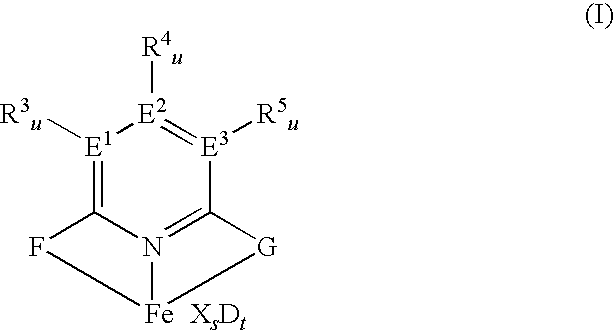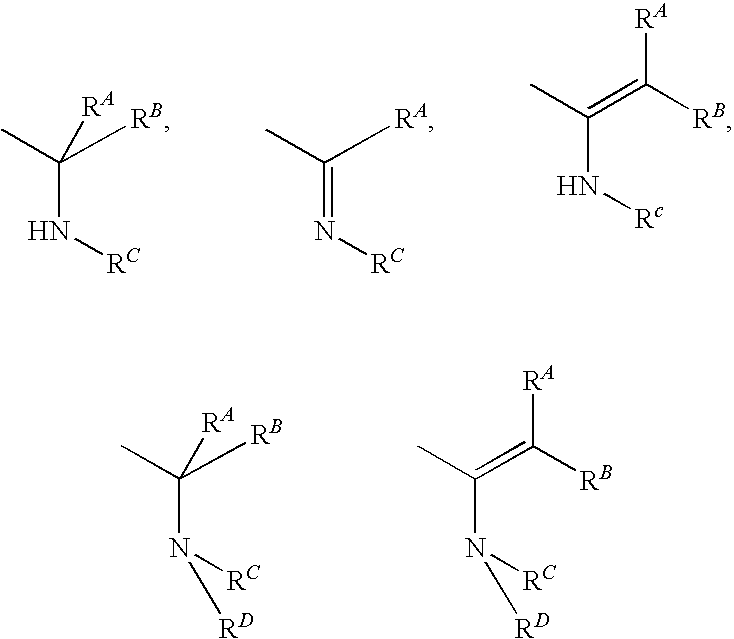Polyethylene, process and catalyst composition for the preparation thereof
a technology of polyethylene and catalyst, applied in the field of polyethylene, can solve the problems of low stress cracking resistance, adversely affecting the creep behaviour of articles made of such polyethylene, and time-consuming technique, and achieves the effects of reducing the creep resistan
- Summary
- Abstract
- Description
- Claims
- Application Information
AI Technical Summary
Benefits of technology
Problems solved by technology
Method used
Image
Examples
example 1
Preparation of a Supported Chromium Catalyst
[0127]150 g of supported chromium (0.3% by weight on support) were used. The support used was a spray dried SiO2 support having a surface area (BET) of 300 m2 / g and a pore volume of 1.60 ml / g.
[0128]Such a support is available commercially from Grace under the name XP02107. To 135 kg of such a support were added 192 l of a solution of Cr(N03)39H20 in methanol (17 g / l) were added, and after 1 hour the solvent was removed by distillation under reduced pressure (900-300 mbar) at 70-75° C. The resulting intermediate contained 0.3 wt % of chromium.
[0129]100 g of the support so treated was placed in a quartz activator, which was heated under nitrogen stream (130 l / h) during 5 h up to 550° C. At 300° C. the gas switched automatically from nitrogen stream to air stream (130 l / h). The temperature was kept for 2 h at 550° C. Then during 5 h the quartz activator was cooled down under air stream, wherein the gas switched automatically from air stream t...
example 2
Prepolymerization of the Chromium Catalyst of Example 1
[0130]37 g of chromium catalyst prepared in Example 1 were suspended in 650 ml heptane in a 1-1 four-necked flask provided with contact thermometer, Teflon blade stirrer, gas inlet tube, condenser and heating mantle. The suspension was heated to 63° C., and ethylene was fed in for 60 minutes (8 l / h) at this temperature. The colour changed from brown-beige (CrVI) to olive-green (CrII-III). The not dissolved ethylene was fumigated with argon. The suspension was transferred to a glass filter frit and washed with 500 ml heptane. The product was dried at 0 mbar until weight constancy. Percentage of polymer was 24% by weight of total product.
example 3
Preparation of 2,6-bis[1-(2-chloro-4,6-dimethylphenylimino)ethyl]pyridine iron(II) chloride
[0131]35.0 g 2,6-diacetylpyridine (0.215 mol), 50 g of Sicapent® (phosphorus(V) oxide, phosphoric anhydride) and 76.8 g (0.493 mol) 2-chloro-4,6-dimethylaniline were dissolved in 1500 ml of THF. The mixture was heated under reflux conditions for 42 hours. The amount of product reached 71.2% (GC / MS). The mixture was subsequently filtered at room temperature. The filter cake was washed with 50 ml of THF. The solvent of the combined filtrates was distilled off. 250 ml of methanol were added and the mixture is stirred for 1 hour. A yellow suspension formed and the product was isolated by filtration. The filter cake (product) was washed with methanol (2×20 ml) and subsequently dried. 58 g of the ligand was isolated. The ligand was dissolved in THF. FeCl2*4H2O was added and the mixture was stirred for about 4 h at room temperature. A blue precipitate formed. The complex was isolated by filtration (r...
PUM
| Property | Measurement | Unit |
|---|---|---|
| Density | aaaaa | aaaaa |
| Density | aaaaa | aaaaa |
| Density | aaaaa | aaaaa |
Abstract
Description
Claims
Application Information
 Login to View More
Login to View More - R&D
- Intellectual Property
- Life Sciences
- Materials
- Tech Scout
- Unparalleled Data Quality
- Higher Quality Content
- 60% Fewer Hallucinations
Browse by: Latest US Patents, China's latest patents, Technical Efficacy Thesaurus, Application Domain, Technology Topic, Popular Technical Reports.
© 2025 PatSnap. All rights reserved.Legal|Privacy policy|Modern Slavery Act Transparency Statement|Sitemap|About US| Contact US: help@patsnap.com



